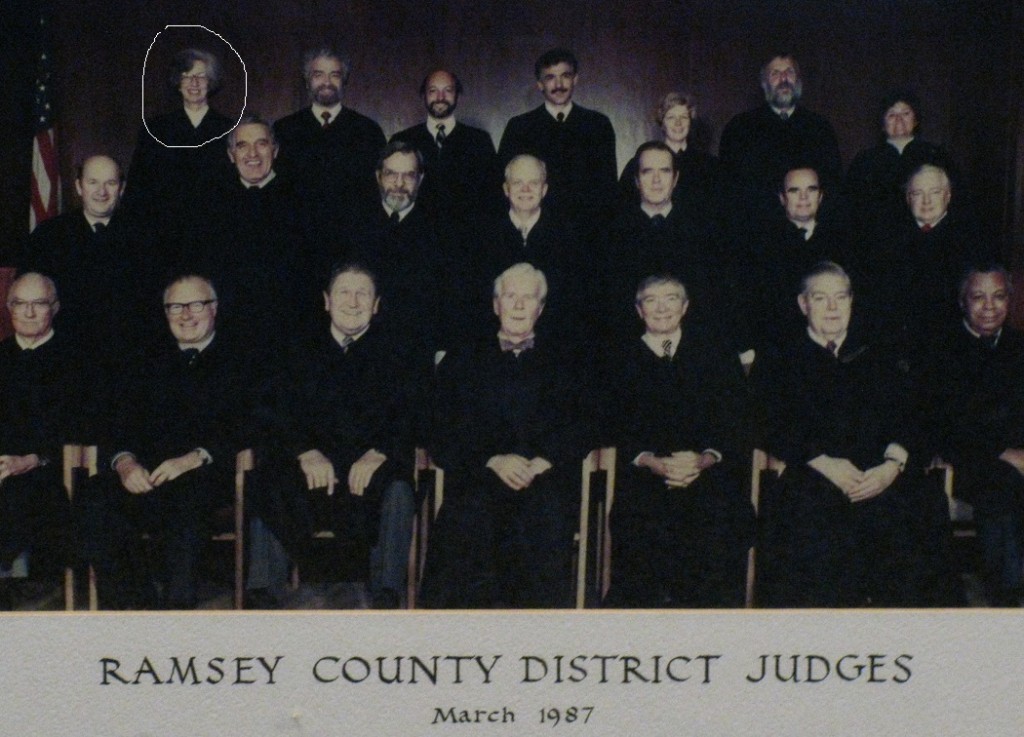 As Women’s History Month begins this week, it is timely to consider women who have shaped our judicial district. Just as people have noted that our historic judge portrait collection contains no non-white members, it is equally true that the portraits are all of men without a woman in sight.
As Women’s History Month begins this week, it is timely to consider women who have shaped our judicial district. Just as people have noted that our historic judge portrait collection contains no non-white members, it is equally true that the portraits are all of men without a woman in sight.
As a child, Mary Louise Klas had wanted to be a lawyer, but this ambition didn’t seem practical when she graduated from the College of St. Catherine in 1952. So she worked in various office jobs until she finally followed her instincts and enrolled at the William Mitchell College of Law, from which she graduated in 1960. She married her classmate Daniel Klas, and they went on to have five children and a successful joint practice of family law. It was this successful work-life balance that inspired a young mother that sat next to her at a political dinner in 1962 to enroll in law school herself. That young mother was none other than Rosalie Wahl.
Mary Louise Klas was appointed to the 2nd Judicial District bench in 1986, the first woman appointed to this position. Objectively, the appointment of a woman to this position may not in itself have been as historically significant as Judge Maxwell’s appointment. Betty Washburn had been sworn into Hennepin County Municipal Court back in 1950, and Susanne Sedgwick had been appointed to the 4th Judicial District (Hennepin) in 1974. By 1986 Rosalie Wahl herself had been on the Minnesota Supreme Court for nine years. (Additionally, there had been women on the Ramsey County bench before it formally became the Second Judicial District.) Klas may be better known for her fierce advocacy against domestic violence. Once sworn into her new position, Klas “made it clear that she would be different kind of judge, criticizing police, prosecutors and the courts for not being tough enough on domestic violence.” She kept every word of that promise, which often pitted her against police chiefs, prosecutors, and her fellow judges along the way. At one time she was the issuing judge more than 90% of the orders for protection in Ramsey County. Judge Klas took all the cases that came before her very seriously, and as a result professed that “worries filled her mind [and] nightmares filled her nights.”
Klas retired from the bench in 2000, but not from passionate advocacy for domestic violence victims. She has continued to be active in organizations including Guild Incorporated, ISAIAH Domestic Violence Task Force, Minnesota Advocates for Human Rights and Minnesota Program Development, Inc.
*****
ADDITIONAL SOURCES:
2 Named to Ramsey District Court – Star Tribune Sept. 26, 1986
Paul Gustafson, Judge, Activist Mary Klas Retires; She Used her Position – To Some Controversy – To Get Tougher on Domestic Violence in Ramsey County. Star Tribune July 3, 2000
Kate Parry, Judge Crusades Against Batterers – Law Enforcement Called Inadequate – Star Tribune Oct. 25, 1989
Phillip Pina, Judge to Leave Bench and its Moving Human Drama – St.Paul Pioneer Press June 26, 2000
Lori Sturdevant, Her Honor: Rosalie Wahl and the Minnesota Women’s Movement (MHSP 2014)
